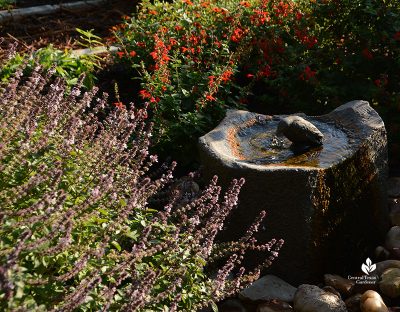Why are leaves browning on my Chinkapin oak?
Thanks to Craig Burnett for this great question! Several months ago the leaves started turning brown. The issue started a few months ago, and even though he’s had lots of rain, there’s not standing water and the area around the tree is flat, so the water runs off quickly.
Well, Craig, the good news is that the damage does not appear to be due to any insect or disease issue, although that can’t be completely ruled out. The damage patterns on the leaves are pretty uniform, which often indicates an environmental cause, such as too much or too little water.
Since we’ve been inundated with rain, it would seem that we could rule out too little water, but root problems, such as girdling roots, can inhibit the uptake of water, even when there’s plenty in the soil. But I don’t think that’s the case here.
It could be that water in the air, not the soil, is the issue. With spring arriving so early this year, bringing with it so much rain and high relative humidity when the new leaves were emerging, it’s possible that there was a fungal infection of some sort earlier in the year.
In this situation, as the leaves develop, the tissue surrounding the infection sites starts to die and turn brown, which is what we see in the later photos.
But another environmental possibility with Craig’s tree seems possible. The damage pattern could also indicate herbicide damage or over fertilization. If herbicides are applied later in the year, once the tree has leafed-out and the leaves are fully developed, there may be no damage at all, or it may not even be noticeable. But if applied in the early spring, when the tree is just getting growing again but the grass hasn’t quite yet picked up steam, more of the herbicide will be taken up by the tree than the grass.
In this situation, it’s best to spot treat weeds if you can, rather than treat the entire yard. In any event, I know the damage appears to be bad, but overall, the tree looks very healthy. But it will drop those damaged leaves this fall and most likely recover just fine.

